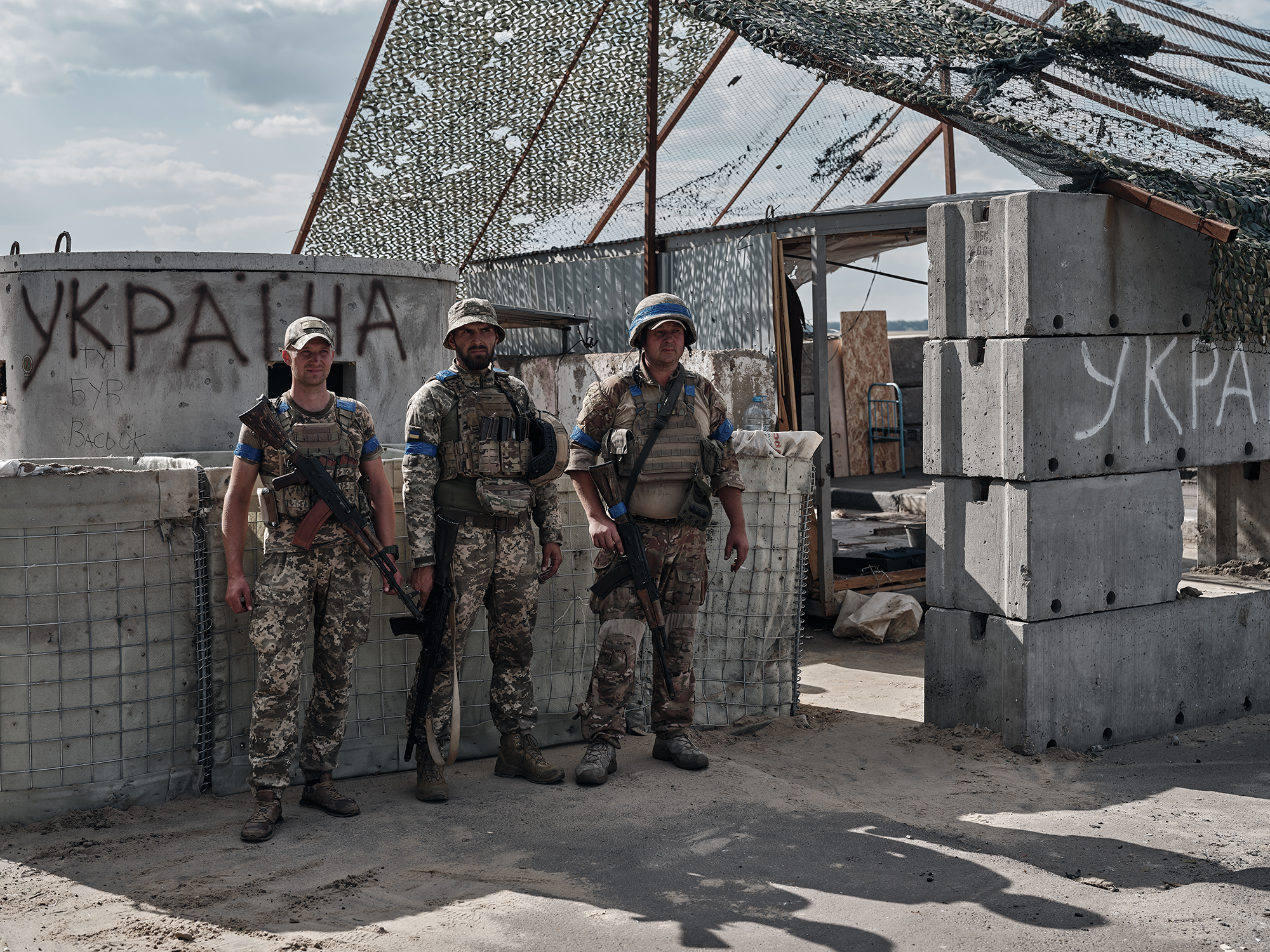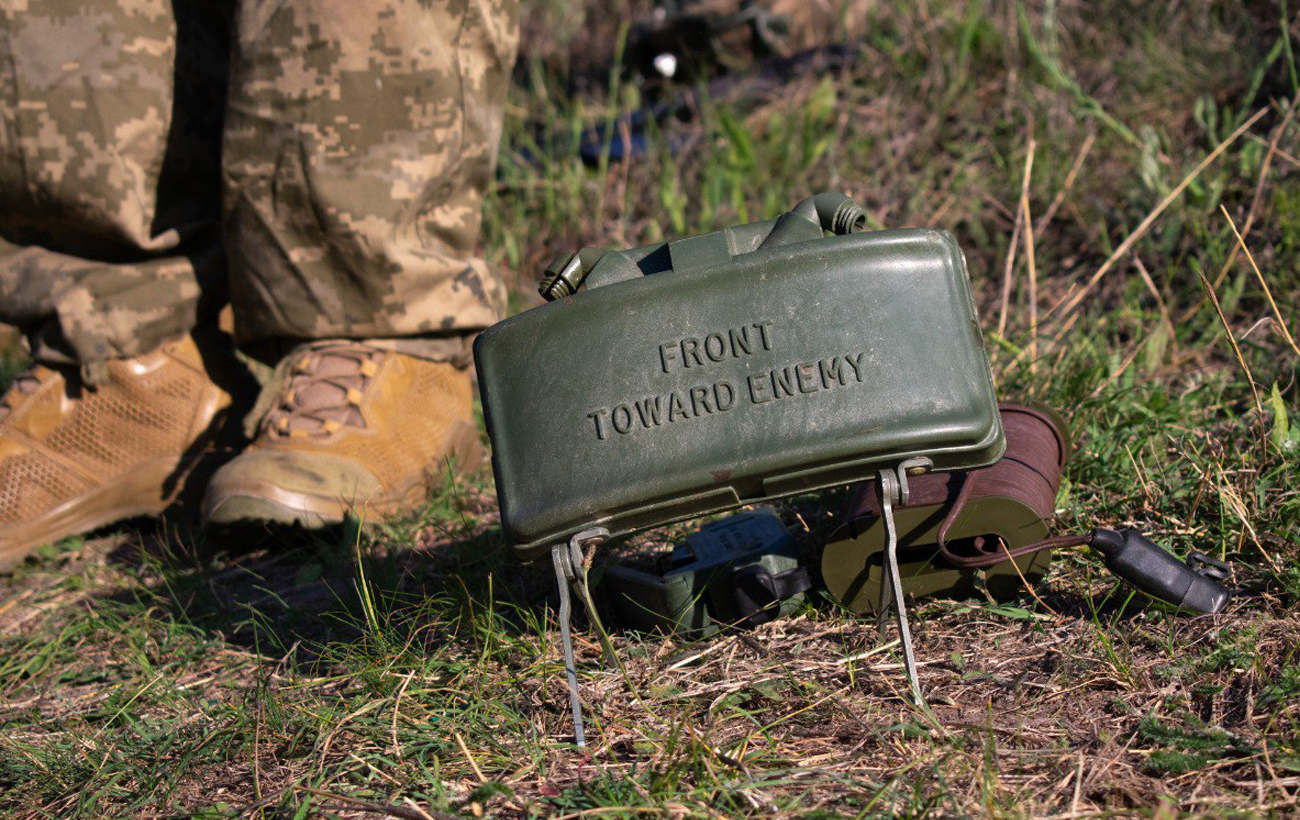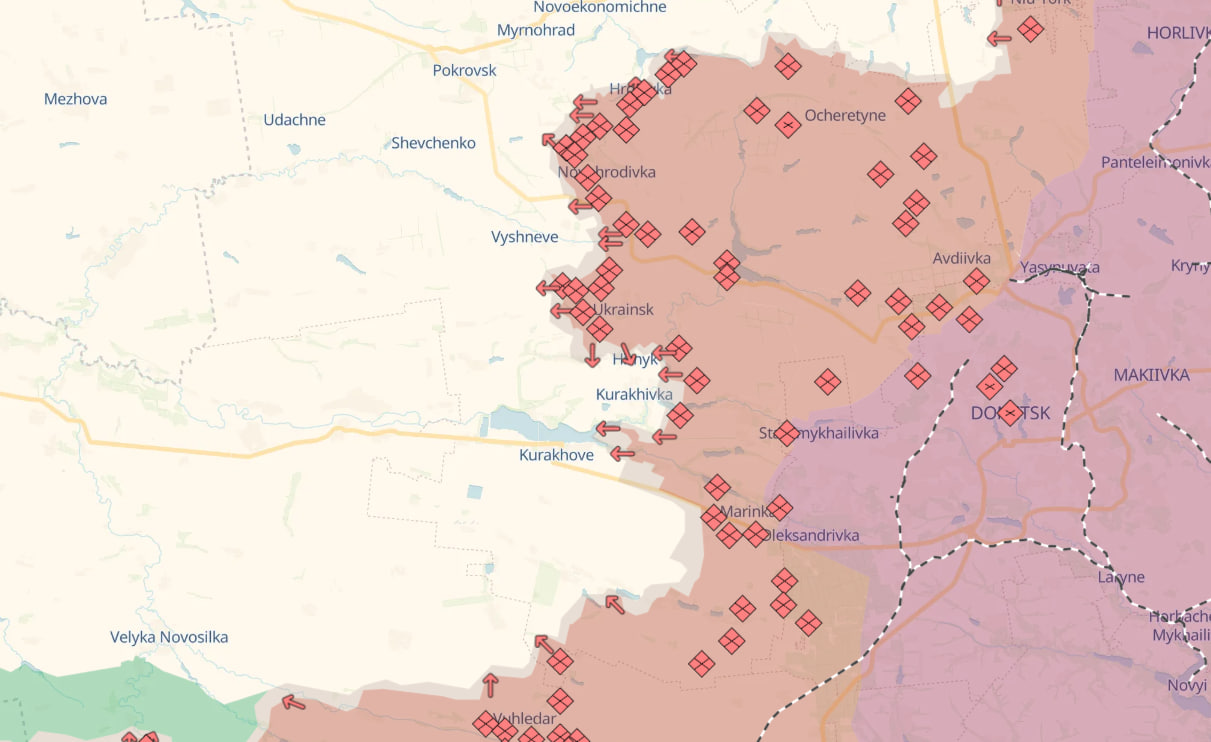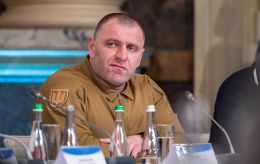Russia advancing in Kursk and Donbas: Is Ukrainian front at risk of collapsing?
 Ukrainian troops are on the defensive along the entire front line (photo: GettyImages)
Ukrainian troops are on the defensive along the entire front line (photo: GettyImages)
Russia has launched a counteroffensive in the Kursk region and continues its campaign along Ukraine's entire eastern front. RBC-Ukraine's military-political observer reports on what is happening on the battlefield and the enemy’s plans.
Contents
For over a year, Russia has continued its offensive. Ukraine’s Kursk operation has not forced the enemy to slow down in key areas. In recent weeks, the adversary has advanced around Toretsk, Chasiv Yar, Pokrovsk, and Kurakhove, capturing Vuhledar and intensifying efforts near Kupiansk.
The enemy's main goal now is to reach the administrative borders of the Donetsk region. By the end of the year, they aim to fully control at least the southern part of it, while regaining control over the Kursk region remains a priority for Moscow.
Northeast: Kursk region, Kharkiv, and Kupiansk directions
Ukrainian units in the Kursk region have transitioned to defense. According to Moscow's earlier plans, enemy forces were to push out the Armed Forces of Ukraine (AFU) by mid-October. While they failed to meet this deadline, they have achieved some tactical successes in the past few weeks.
The enemy is counterattacking in the Kursk region on multiple fronts. Russian forces recaptured the Korenevo area, advancing southeast toward Novoivanivka. They also attack Novoivanivka from the west, pushing Ukrainian units out of the Liubymivka-Zelenyi Shliakh area.
In Novoivanivka, Ukrainian forces have managed to hold off the Russian advance. However, if Russia advances further east and captures Mala Loknya, it will cut off Ukraine’s northwestern wedge in the Kursk region. Simultaneously, the enemy has increased pressure from the southeast near Sudzha, where they have liberated the village of Borky and approached Plekhovo and Cherkaska Konopelka, where fighting continues.

The Ukrainian military maintains control over part of the Kursk region, which it established in August this year (photo: GettyImages)
Defense sources say the Kremlin has set new deadlines for its forces: full control of the Kursk region by February 1, 2025, and the creation of a buffer zone on the Ukrainian side of the border by February 25.
Recent reports suggest Russia is sending a quarter of its 11,000-strong North Korean troop contingent to the Kursk region. These soldiers will likely serve as replacements and guard posts, but they are unlikely to affect the course of the fighting significantly.
According to sources, Moscow has amassed over 40,000 troops for the liberation of the Kursk region. The situation is highly dynamic, with towns changing hands in a matter of days. While Ukraine's defense has not collapsed, the chances of expanding its foothold in Kursk appear relatively low.
The success or failure of this operation depends largely on its objectives. Some military and political sources suggest that Ukraine aimed to distract the enemy from their northern Kharkiv advance. If so, this goal was partially achieved, as the Russian movement there has stalled since May. The enemy’s only recent success was regaining control of part of a plant in Vovchansk. Some Russian reserves, initially meant for advancing toward Kharkiv, were redeployed to the Kursk region.
On the other side of the river, the situation for the occupiers looks more favorable. They have reached the outskirts of Kruhliakivka and Kolisnykivka, located on the Oskil River’s bank, south of Kupiansk. Aligning the frontline along the Oskil is now Russia's key task in this area.
If the Russians reach the river, they will pose three significant threats: cutting off Ukrainian forces on the Oskil’s left bank, endangering Ukraine's defense, threatening the loss of Kupiansk's left-bank areas, and simplifying a further advance toward Lyman and northern Donetsk region.
Another theory is that Ukraine acted preemptively, expecting Russia to create sanitary zones in northern Kharkiv and neighboring Ukrainian regions like Sumy. This view is supported by Russia’s plans to occupy Ukrainian border regions after retaking Kursk.

According to one version, Russia planned to launch an offensive in the Sumy region before the Ukrainian Armed Forces' Kursk operation (photo: Facebook 118th Separate Mechanized Brigade)
The third theory is that Ukraine aimed to ease pressure on the eastern front by forcing Moscow to divert forces. Instead of focusing on Kursk, part of which Russia has not controlled for three months, the Kremlin has prioritized the continued occupation of Donbas.
Donetsk region
According to Kremlin directives, Russian forces were to capture Chasiv Yar by May 9. The town’s eastern part is separated from the western part by the Siverskyi Donets-Donbas canal. In early July, the enemy approached the canal. Reports suggest Russian troops may have crossed the canal at Chasiv Yar’s southern outskirts, though the AFU claims the enemy failed to gain a foothold.
If Russian forces crossed the canal, Ukraine’s defense in Chasiv Yar would be significantly complicated. A typical Russian strategy involves the tactic of bypassing populated cities from the north or south, rather than attacking head-on.
Further south, the enemy is fighting in Toretsk, where they captured the Nakhailivka district. Russians likely now fully control New York but have failed to break through to Zabalky in Toretsk's southern outskirts.
Russia is deploying up to 20,000 troops in this sector, while at least three times that number are engaged on the Pokrovsk front. Pokrovsk remains a key target, with Russian forces positioned seven kilometers away.
In recent weeks, the enemy advanced from Hrodivka through the Zhuravka River and from Novohrodivka toward Lysivka and Sukhyi Yar. They are also approaching Selydove, which lies on the path to Pokrovsk.

Russia has made more tactical gains in the southern part of the Donetsk region in recent months (map: DeepState)
The enemy's advance south of Selydove is particularly concerning. This is the junction between Russia’s "Center" and "South" groupings. The occupiers’ success in Kurakhove's right flank increases the risk of encircling Selydove, pushing them closer to a battle for Pokrovsk.
At Kurakhove, Russians are advancing from both the north and east, from Maksymilianivka and Ostrivske, coming within two kilometers of the city.
The Kurakhove front is connected to developments near Vuhledar. After nearly two years of holding the city, Ukrainian forces lost ground to Russian advances from Pavlivka in the southwest and Vodiane in the northeast. While further breakthroughs have not occurred, the enemy now has the option to push toward Velyka Novosilka in the west or tighten their grip between Vuhledar and Kurakhove.
***
Russian forces have made their most significant gains in southern Donetsk, likely shifting their focus there in the coming months. Eventually, they could refocus on northern Donetsk or neighboring Zaporizhzhia.
Both Russia and Ukraine are watching the upcoming US election closely. The Kremlin will try to exploit the "window" before the new US administration is inaugurated, which may shape future US policies on the war.
Significant breakthroughs seem unlikely, and a collapse of Ukraine's front is not yet in sight. Russia will likely continue its infantry assaults with artillery support. Success will depend less on Russia and more on Ukraine's ability to withstand the pressure.

